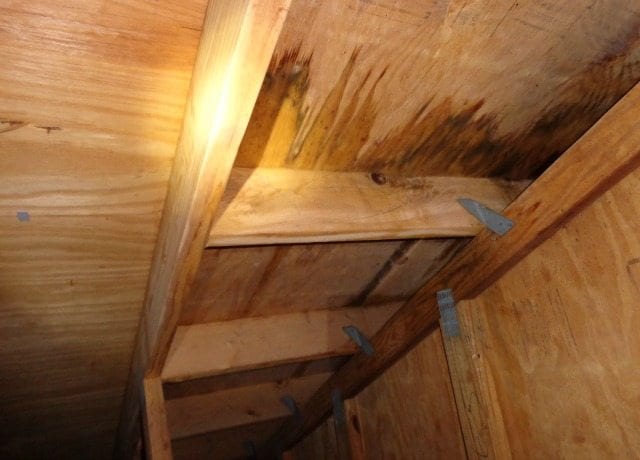A leaking roof is every homeowner’s worst nightmare. Not only do leaks cause discomfort and damage to your property, but they can also lead to respiratory health issues due to dampness and mold build-up. Regular inspection of your roof can help detect leaks before the problem advances. Call your professional roofing inspector. Most leaks will need a quick repair or part replacement. But once the damage spreads to the entire roof, you may need a complete roof replacement.
To help you prevent further roof damage, we have rounded up some of the warning signs of roof leaks. Once you notice these signs, you need to hire a reliable roofing company to inspect your roof. This way, you will unearth other underlying issues, which might cause severe damage to your property. Here are the five common signs:
1. There are some water drips
One of the interior signs of a roof leak is water drips from the ceiling. The drip does not have to be continuous to cause damage. Water can leak through the attic and into your ceiling, causing damp conditions. The water can also freeze and leak only when the ice begins to melt. This will often result in intermittent leaks even when it’s not raining. Before starting on your ceiling crack repair, you must find the source of the crack. If you have moisture damage or poorly installed ceiling sections.
Chronic water drips and moisture issues can cause permanent damage to your roof. If there are poorly-jointed parts in the shingles or iron sheets, fixing the problem could be easier. However, if the leak is due to rust or a failing waterproof material, you may need a replacement.
And while it is difficult to spot a leaking roof, heavy rains will help you identify the leaking area. The moment you notice unexplained water on the floor or walls, that is a sign to keep looking.
2. Spots on exterior walls
Spots on your external walls are often signs of mold or moss growth. If this mold gets a continuous supply of water, they spread faster and soon will become catastrophic. To know precisely where the problem comes from, you need to check for blocked gutters and downpipes. If there is no problem with the two, it means there is a problem with the roof.
Damaged flashing is another roof problem that could be causing mold growth on the external walls. The flashing is designed to protect against leaks in corners and joints. Any issues with the flashing, such as looseness and cracks, could allow water to leak. Regularly checking the flashing after summer and winter helps solve any problems upfront.
Any time you see spots on your exterior walls, the problem is definitely in your roof. Take the time to inspect for mold growth and fix the issue as soon as possible.
3. Water spots on the ceilings and roof decking
Perhaps one of the obvious signs of a leaking roof is water spots on the ceiling. The moment you notice this, it is time to take action. That said, some stains are difficult to detect, especially if you have a colored ceiling. Similarly, the leak could be small such that water doesn’t penetrate through the ceiling. If this is the case, moisture will build upon the ceiling, causing mold build-up.
Apart from the ceiling, water spots on the roof decking are another sign of roof leaks. To check the roof decking for water spots or mold build-up, you need to climb up the roof.
4. Distorted Shingles
If your roofing shingles are old or poorly installed, they may curl downwards or upwards. When this happens, they allow water to leak through the roof. Lost shingles on your roof are also another indicator that water is getting into your roof. To help you catch these problems early enough, routine inspection is necessary.
5. Rusted Gutters
Rusted gutters are not only unreliable but also a possible liability to your roof. Rust makes any metallic material lose its structural integrity. This increases the chances of leaks, especially during long rains or in winter. Once you notice that your gutters are rusted, you need to look out for possible leaks. If the gutters are still rigid except for some leaking areas, you can use gutter repair tape to fix the damaged area.
Take Action to Save your Leaking Roof
Now that you have identified the culprit in your roof, it is time to fix it. Most signs are obvious, except those that need you to climb up the attic. Even then, a professional roofing inspector will handle that problem for you. If the leaking area is small, you can buy a roof leak repair sealant in a local hardware store.
However, a major roof leak issue, especially if the roof is old, requires professional services. Here, you need to hire a competent roofing contractor who will help you identify the problem. Once they have spotted the leaks, you need to discuss the available mitigation measures. Before making up your mind, you need to consider both the short and long-term implications.









Pingback: Home Repairs: When To Call The Pros | My Beautiful Adventures